Prostatitis today plays a leading role in the group of male diseases that are spread mainly through sexual contact. Its complications threaten infertility, decreased libido, impotence.
The first symptoms of prostatitis in men
Prostatitis is an inflammatory disease. It is one of the most common urological pathologies diagnosed by a strong half of humanity.
This anomaly is most commonly seen in men over the age of thirty, although the disease has recently become much younger. Treatment of prostatitis should be performed by qualified professionals (urologists or andrologists) as there is a high probability of developing various complications.
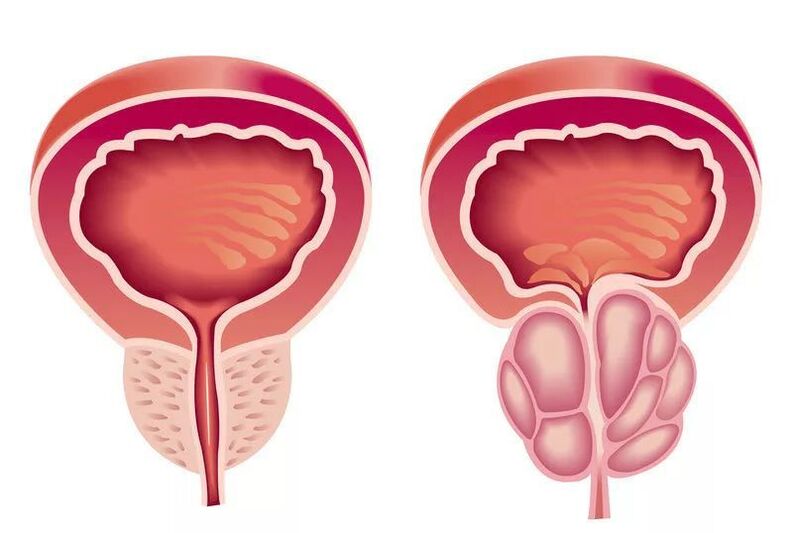
How is prostatitis treated?
With the help of drugs
- NSAIDs - relieve inflammation, fever and fever. They have a mild analgesic effect. When inflammation of the prostate occurs, a short anti-inflammatory medication and taking vitamins are needed to maintain the normal condition of the gland. Men are prescribed: Diclofenac, Nise, Voltaren, Nimesulide. Medicines are made in suppositories, tablets and injections.
- Antibiotics - used to eliminate the infectious or bacteriological factor of inflammation. The treatment regimen for prostatitis is signed after the pathogen has been identified and tested for antibiotic resistance. The duration of treatment is 7-10 days. In severe cases, therapy is extended for up to two weeks.
- The use of hormones is recommended when the usual medication has not been effective and when sexual desire is reduced due to advanced disease. Hormone treatment is contraindicated. The medication is taken under the strict supervision of a urologist.
- Symptomatic medications - Take Aspirin tablets to relieve pain syndrome. The cramps are removed by No-shpa. Novocain blockade is recommended in patients with persistent intense pain.
- Vitamins and drugs to maintain prostate function. During remission, it is recommended to take medications that normalize metabolism and improve the blood supply to the glandular tissues as well as the production of bracts. Phytopreparations are prescribed for this purpose: Prostamol-Uno, Prostate-forte and the like. To strengthen the immune system, a complex of vitamins and minerals is presented: Duovit, Vitrum.
Self-healing is dangerous, it does more harm than good. You should consult a urologist before using any of the above medications.
Using physiotherapy
- UHF and microwave.
- Magnetotherapy.
- Mud cure.
- Plating.
- Ultraphophoresis.
- Laser treatment.
- Heat therapy.
natural remedies
Diagnostics
To begin treatment for prostatitis in a timely manner, you should contact a qualified professional who will perform a comprehensive examination and make a correct diagnosis. The list of recommended diagnostic methods includes:
- Blood tests - test for biochemical composition, PSA (prostate-specific antigen) content, general analysis and PCR if necessary.
- Urine Test - The man is asked to urinate in several different containers so that the test can be done in different ways.
- Scraping from the surface of the urethra to detect infectious pathogen.
- Bacteriological culture of prostate secretion and urethral secretion to determine bacterial pathogen and its resistance to drugs.
- Ultrasound of the prostate - allows the presence or absence of gland size and shape, tissue fusion, adhesions and cicatricial changes.
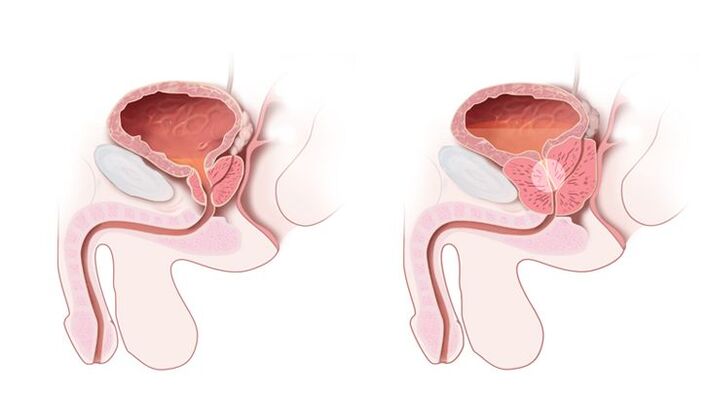
Rectal digital examination is a mandatory element in the diagnosis of prostatitis. A finger scan allows the doctor to feel the gland and evaluate its density, structure, shape, and size. During the rectal examination, they also receive the secret of the prostate, which is sent for analysis. Additional test methods are assigned to a specific patient if necessary.
These may include measurements of urine flow rate, magnetic resonance imaging or computed tomography, radiographs of pelvic organs, and other methods.
Acute prostatitis
The disease begins with a sharp rise in temperature (up to 40 degrees), a torturous headache, and fever. Symptoms include groin, obstruction, back pain, urethra, frequent urination, and constant urination.
Emptying of the bladder is delayed and burning. The urine itself becomes cloudy and a mixture of blood may appear in it. There is irritability, fatigue.
Acute prostatitis results in complete dissolution of the process (with timely treatment). Because many organs in the pelvis have lesions, these cannot be left to chance, otherwise the appropriate complications will occur:
- Vesiculitis is an inflammation of the seminal vesicles, the cause of purulence in the sperm, which not only impairs the quality of the ejaculate but also leads to the loss of reproductive functions.
- Colliculitis - inflammatory changes in seminal tuberculosis are the causes of severe pain during sex, interruption of orgasm, psychological impotence.
- The formation of an abscess in the body of the prostate, rupture, and purulent damage to the rectum lead to worsening of symptoms, severe poisoning of the body, or even death.
- Stagnation of prostate tissues leads to changes in their structure, disruption of innervation and blood supply, both in the gland and in nearby organs, with a violation of their functions. An erection becomes insufficient for full sexual intercourse, premature ejaculation is observed without prolonged sexual intercourse orgasm.
- Cicatricial changes in the gland lead to sperm cord infertility, decreased sperm quality composition, and sperm motility. Narrowing of the urethra interferes with the normal urination process, and blockage of the bladder can cause acute urinary retention, which requires urgent surgical care.
Main symptoms
As mentioned above, the disease can be chronic or acute. Increased urination is common and one of the most important symptoms. A healthy man usually experiences no more than 10-11 urination stimuli during the day (the normal value is 5-6 urination stimuli).
The development of prostatitis has a negative effect on the bladder, so the following symptoms occur in the presence of the disease:
- Increase in the number of urges (while the amount of urine per day remains unchanged).
- Urine comes out in small doses, which involves receiving false signals from the bladder receptors due to the presence of an inflammatory process. Because of this, there may be a feeling that the bladder is full even after emptying.
- Pain while urinating due to narrowing of the urethra due to an inflammatory process in the prostate.
- Difficulty urinating due to compression of certain areas of the urethra by inflammation. In some cases, men are unable to empty their bladders at all because of this.
- At night, the walls of the bladder give false signals, which increases the number of trips to the toilet during sleep.

Part of the diagnosis of prostatitis can also be made by monitoring body temperature, which is coupled with problems with urination. If these problems are accompanied by an increase in temperature to subfebrile and febrile values, we can most likely speak of the development of pathology. It is important to note that in the later stages of the development of the disease, on the contrary, a decrease in body temperature of 35, 5-36 degrees is observed, which is definitely an extremely negative and dangerous symptom that should not be. allowed.
In the middle stage of the disease, blood is seen in the patient's urine. This signal is relatively rare and often non-indicative, but extremely dangerous. It may be due to purulent fusion of the prostate, trauma to the prostate, and complications of the inflammatory process with hyperplasia. Treatment in this case is complicated (often surgery is required).
Treatment should be started as soon as the first symptoms of the disease appear. If you have had at least some, albeit insignificant, urine problems, which in some cases include fever and pain in the area of simplicity, ask an urologist immediately to clarify the problem. diagnosis. It is essential to pay attention to the signs of pathology described above, as only timely treatment can quickly and painlessly overcome prostatitis.
Why does the prostate become inflamed?
There are actually only 2 main reasons:
- Infection. Most often, prostatitis is caused precisely by an infection of the prostate. Infection can occur through the bladder, urethra, rectum, blood and lymph. It turns out that inflammation of the prostate itself is often a complication of an existing disease. Therefore, never self-heal, you must first cure the source of the infection. Cystitis, pyelonephritis, urethritis, STIs (sexually transmitted infections) - this is understandably related directly to the prostate. Even untreated tonsillitis, sinusitis, flu, caries can return with prostatitis.
- Circulatory disorders. This may be due to structural features, urethral spasms, conduction disturbances and abdominal and pelvic muscle function, as well as external factors.
However, whether or not prostatitis develops depends above all on predisposing factors:
- Chaotic sex life. Abundant sexual partners, especially unprotected contacts - exhaust the immune system, which must constantly face the foreign microflora in female secretions. And sooner or later it won't work.
- Long abstinence. This is the other extreme. Lack of sex has a bad effect on a man’s general condition and especially on the prostate. The secret gets stuck, the blood circulation is disturbed, an infection develops.
- Masturbation. Sometimes men try to escape the lack of sex with complacency. However, this causes a decrease in the tone of the prostate and becomes lethargic. It is even isolated in a separate type of prostatitis - congestive.
- Overweight. In overweight men, the load on the pelvic organs increases significantly, and the whole body in general. The blood supply is disrupted, leading to prostatitis, hemorrhoids and a host of other diseases.
- Hypothermia. "Don't sit in the cold, " all girls are told. However, this also applies to men. passengers on trains, as well as fashionable trousers.
- Inaction. This basically applies to work processes where you have to sit in one place for long periods of time: drivers, office workers. It is especially harmful to cross your legs as the load on your prostate only increases.
- Tension. Psychiatric problems, chronic sleep deprivation, and overworked work are favorites of infections.
- Suppression of urination. Is it worth the potential problems of 5 minutes saved in a busy workflow?
- Bad habits. Well, where without them? Alcohol and nicotine abuse that only hurts.
- Malnutrition. Fatty, spicy, salty foods are a magnet for diseases of the pelvic organs.
- background diseases. Any untreated infectious disease can be complicated by prostatitis.
- Tight underwear. As well as "fashionable" too tight pants. They constrict the pelvis, disrupt blood circulation, cause swelling and inflammation.
- Physical overload. Professional athletes, loaders, active visitors to the gyms are in great danger.
- Self-care. Men are sometimes ashamed to admit their problems even in front of a doctor, trying to defeat the disease with various proven and not very good folk remedies. However, it is not possible to cope here without medication prescribed by a competent doctor.
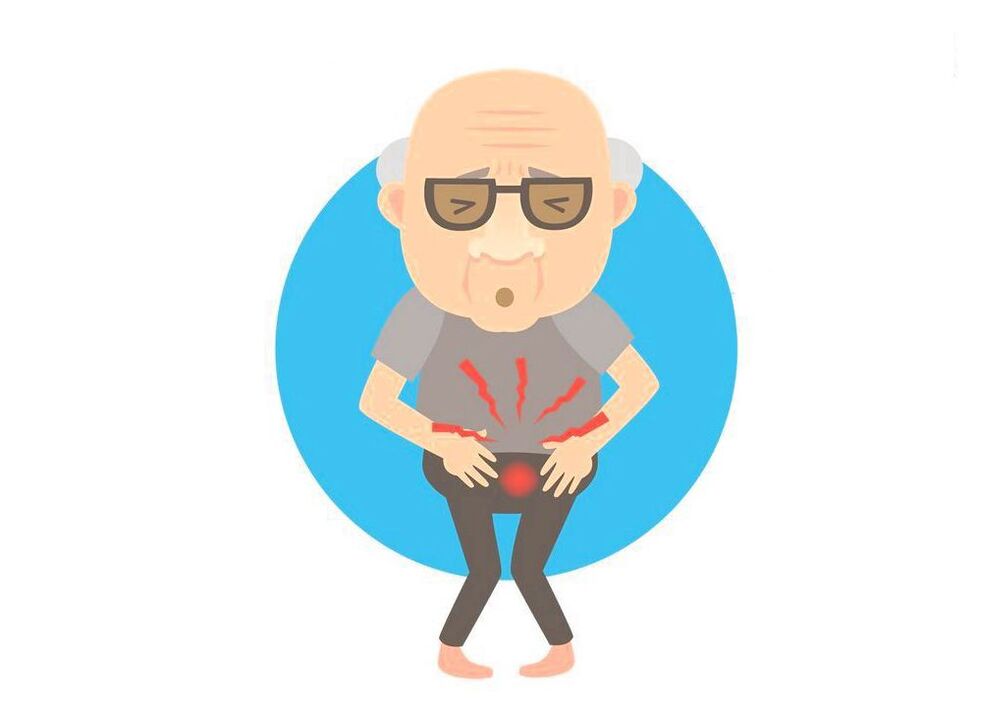
How is the disease diagnosed?
The diagnosis is made by a urologist or andrologistafter examining the patient, collecting a medical history, and studying the symptoms. The doctor should find out the patient's method of contraception, the presence of STIs in the sexual partner, and the possibility of unprotected anal intercourse. These data make it easier to make a diagnosis and steer your doctor in the right direction. Recording the symptoms of the disease or the discomfort in the perineum makes it possible to assess the course and severity of prostatitis. The urologist will necessarily examine the patient’s genitals and perform a rectal examination of the prostate. To do this, insert one finger into the patient's anus and feel the protruding prostate on the front wall of the rectum. Pain and its magnitude indicate the intensity of the inflammatory process.
The doctor then performs a series of instrumental, microscopic, bacteriological, and immunological tests to determine the cause of the disease. The most common diagnostic method is a 4 or 3 glass urine sample. The first method is more time consuming and difficult to implement in practice, as it requires the patient to interrupt urination several times intentionally. The second modification is simpler: the patient is constantly urinating in three different containers in equal doses. The first part provides information about the condition of the urinary tract, the second about the pathology of the bladder and kidneys, and the third about the condition of the prostate. All collected material is examined under a microscope. In inflammation of the prostate, white blood cells and sometimes bacteria are found in the third part of the urine.
The secretion of the prostate gland is also taken for microscopy.To do this, the doctor massages the prostate through the wall of the rectum for a while to empty it into the urethra. The collected material is smeared in the laboratory, stained and examined under high magnification. The sign of inflammation is leukocytes, the bacterial etiology of the disease is the bacteria in the smear. To determine the type of pathogen, the secretion of the prostate is placed on a medium. If pathogenic microorganisms are present, they form microbial colonies after 3-5 days, which can then be studied. The bacteriological method makes it possible to obtain data on the antibiotic susceptibility of the microflora.
Among the instrumental diagnostic methods, the following are performed:
- Ultrasound of the kidneys;
- Prostate with TRUS dopplerography - an ultrasound probe is inserted into the rectum for the best display of the prostate gland, and blood flow is also assessed;
- Ascending uroretrography is required for persistent recurrent prostatitis. Radiopaque material is injected into the urethra and a series of images are taken.
In addition to these methods, all types of research on sexually transmitted infections are of great importance. These include:
- PCR ejaculate, prostate secretion, scraping of the urethral mucosa - the method allows the detection of a wide range of pathogens;
- Blood ELISA - for the detection of specific antibodies against STIs.
Types of prostatitis
According to the 1995 criteria of the American National Institutes of Health (NIH USA), there are four categories of prostatitis:
- Category I: Acute prostatitis;
- II. category: Chronic bacterial prostatitis;
- III. category: Chronic prostatitis / chronic pelvic pain syndrome (CP / CPPS);
- Category IIIa: Chronic prostatitis / chronic pelvic pain syndrome with signs of inflammation;
- Category IIIb: Chronic prostatitis / chronic pelvic pain syndrome without signs of inflammation;
- ARC. Category: Asymptomatic chronic inflammation of the prostate.
Occasionally, chronic granulomatous inflammation of the prostate occurs that is not included in this classification.
Most experts, on the other hand, distinguish between:
Depending on the course of the disease:
- acute prostatitis;
- chronic prostatitis;
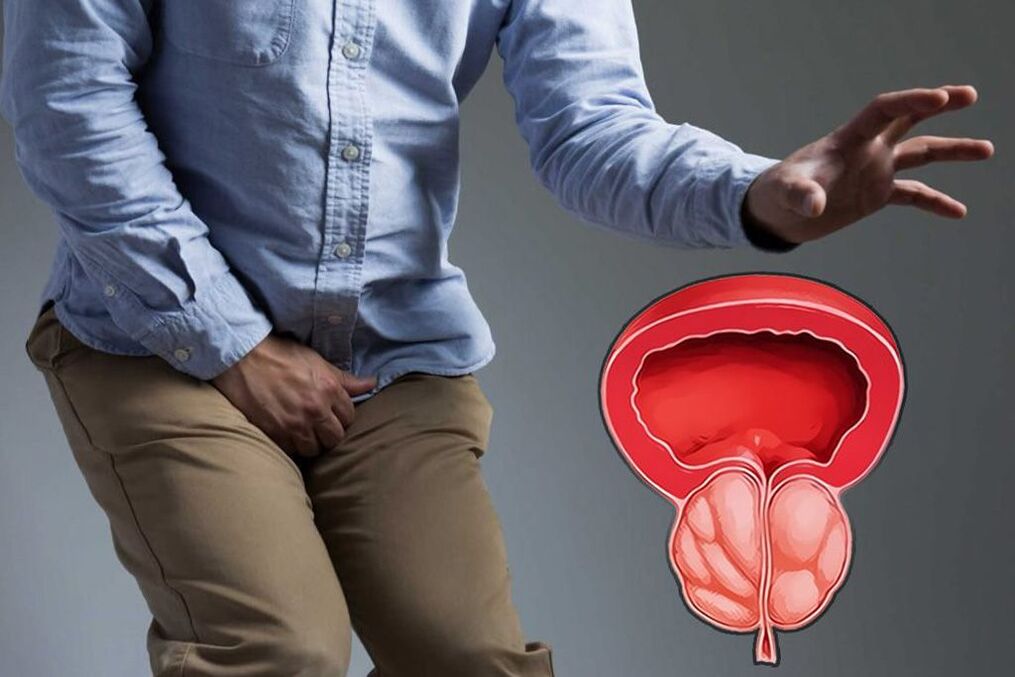
Depending on the cause of the disease:
- bacterial prostatitis;
- non-bacterial prostatitis
Bacterial prostatitis is seen in most cases (especially in men under 40 years of age).
Based on this, they are:
- acute bacterial prostatitis;
- chronic bacterial prostatitis;
- chronic bacterial prostatitis.
Prevention
To prevent recurrence of inflammation or chronic pathology, follow these recommendations:
- Reduce the amount of alcohol you consume;
- Exercise regularly;
- Avoid hypothermia;
- Don't smoke;
- Avoid stressful situations;
- Treat inflammation in a timely manner - this is especially true for sexually transmitted infections;
- Take a contrast shower;
- Avoid lifting heavy objects;
- Use barrier-free methods of contraception;
- have regular sex;
- Take vitamin preparations;
- Participate in strengthening immunity;
- visit a urologist twice a year;
- Eat correctly and in a balanced way.
The purpose of the prostate in the male body: what is responsible?
The prostate is an externally secreted gland in the male body.
Iron belongs to the reproductive system and is responsible for the production of a number of special substances:
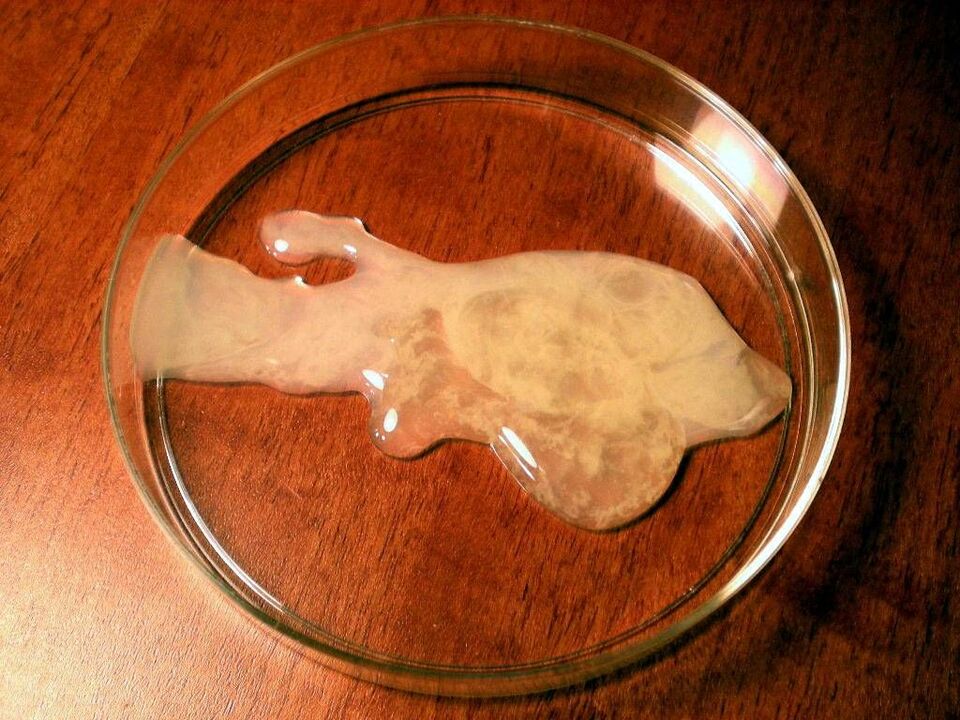
- the main is the secret (prostate), which ensures the required viscosity of the ejaculate and, accordingly, the normal motility of the sperm. If the sperm is too thick, fertilization is difficult and a woman simply cannot get pregnant from a seemingly healthy man;
- other components maintain the normal composition of the sperm. These include biologically active substances, immunoglobulins, enzymes, vitamins, trace elements, etc. The norms of these substances are unique and their content is regulated by the prostate.
Thus, she is responsible for the man’s reproductive abilities, the possibility of a regular and full sex life and having children. This is the main function of the gland, but there are others, no less important.


























